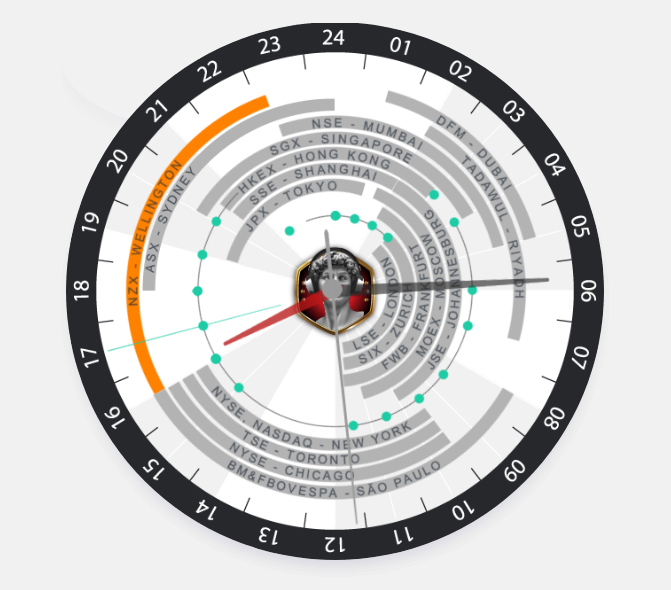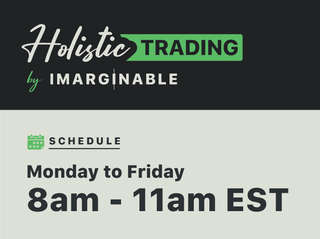When day trading in the U.S. stock market, you may notice certain patterns, based on the time of day, that occur more often than not. These patterns, or tendencies, happen often enough for professional day traders to base their trading around them.
One tendency is that the stock market can become less volatile, flatten out, and see less volume in and around the New York lunch hour. Many day traders stop trading about half an hour to an hour before this slowdown kicks in and don’t trade again until well after the lunch hour, when volatility and volume pick up again.
Key Takeaways
- When it comes to day trading, there are certain patterns that appear based on the time of day.
- Many day traders base their strategies around these patterns.
- One tendency is that the stock market can become less volatile during the lunch hour in New York.
- Big news events can throw a wrench in these types of tendencies, resulting in big trends, reversals, or other movements.
Other Common Tendencies
9:30 a.m.: The stock market opens, and there is an initial push in one direction. (It may take a couple minutes to get going.)
9:45 a.m.: The initial push often sees a significant reversal or pullback. This is often just a short-term shift, and then the original trending direction re-asserts itself.
10:00 a.m.: If the trend that began at 9:30 a.m. is still in play, it will often be challenged around this time. This tends to be another time where there is a significant reversal or pullback
11:15–11:30 a.m.: The market is heading into the lunch hour, and London is getting ready to close.1 This is when volatility will typically die out for a couple hours, but often the daily high or low will be tested around this time. European traders usually close out positions or accumulate a position before they finish for the day. Whether the highs or lows are tested or not, the market tends to “drift” for the next hour or more.
11:45 a.m.–1:30 p.m.: This is lunch time in New York, plus a bit of a time buffer. Usually, this is the quietest time of the day, and often, day traders like to avoid it.
1:30–2:00 p.m.: If the lunch hour was calm, then expect a breakout of the range established during lunch hour. Often, the market will try to move in the direction it was trading in before the lunch hour doldrums set in.
2:00–2:45 p.m.: The close is getting closer, and many traders are trading with the trend, thinking it will continue into the close. That may happen, but expect some sharp reversals around this time, because on the flip side, many traders are quicker to take profits or move their trailing stops closer to the current price.
3:00 and 3:30 p.m.: These are big “shakeout” points, in that they will force many traders out of their positions. If a reversal of the prior trend occurs around this time, then the price is likely to move very strongly in the opposite direction. Even if the prior trend does sustain itself through these periods, expect some quick and sizable counter-trend moves.
As a day trader, it is best to be nimble and not get tied to one position or one direction. It can be very hard to hold a trade for very long between 3 p.m. and the close.
The last hour of trading is the second most volatile hour of the trading day. Many day traders only trade the first hour and last hour of the trading day.
3:58–4 p.m.: The market closes at 4 p.m. After that, liquidity dries up in nearly all stocks and ETFs, except for the very active ones. It’s common to close all positions a minute or more before the closing bell, unless you have orders placed to close your position on a closing auction or “cross.”2
All times listed here are Eastern Standard Time. Other than the open and close times (9:30 a.m. and 4 p.m.), the times listed are approximate.
Considerations
Big news events can throw a wrench in these tendencies, resulting in big trends, reversals, or movement through the lunch hour or other times that would be uncommon without some sort of external catalyst.
The times provided are estimates only and therefore can only be incorporated into a trading strategy if you adequately test them. The tendencies should never be used as a strategy or trade signal on their own.
Frequently Asked Questions (FAQs)
What is the best time of day to buy stocks?
If you believe a stock will go up throughout the day, then the best time to buy it would be on the first pullback of the day. That pullback could be an immediate flush at the open, or it could be a softer retracement after an initial push. When the pullback reverses, that’s the ideal time to go long for a bullish day trade, but it can be difficult to perfect this timing.
What pre-market conditions indicate a stock will go up during the day?
A trader may look for bullish signals pre-market, but the signals they look for will depend on their strategy. If they depend on buying oversold bounces, for example, then they will watch for heavy selling pre-market. A momentum trader, on the other hand, would do the exact opposite and seek out stocks that are set to gap up at the open.
What are seasonal patterns in stock markets?
Seasonal patterns could refer to patterns in specific stocks or broad patterns across the market. Some businesses experience seasonal cycles, such as a cruise company that sells more tickets during the holidays, and their stocks may reflect that. Other traders watch for broad seasonal patterns, such as the idea that a trader should “sell in May and go away” until November.




